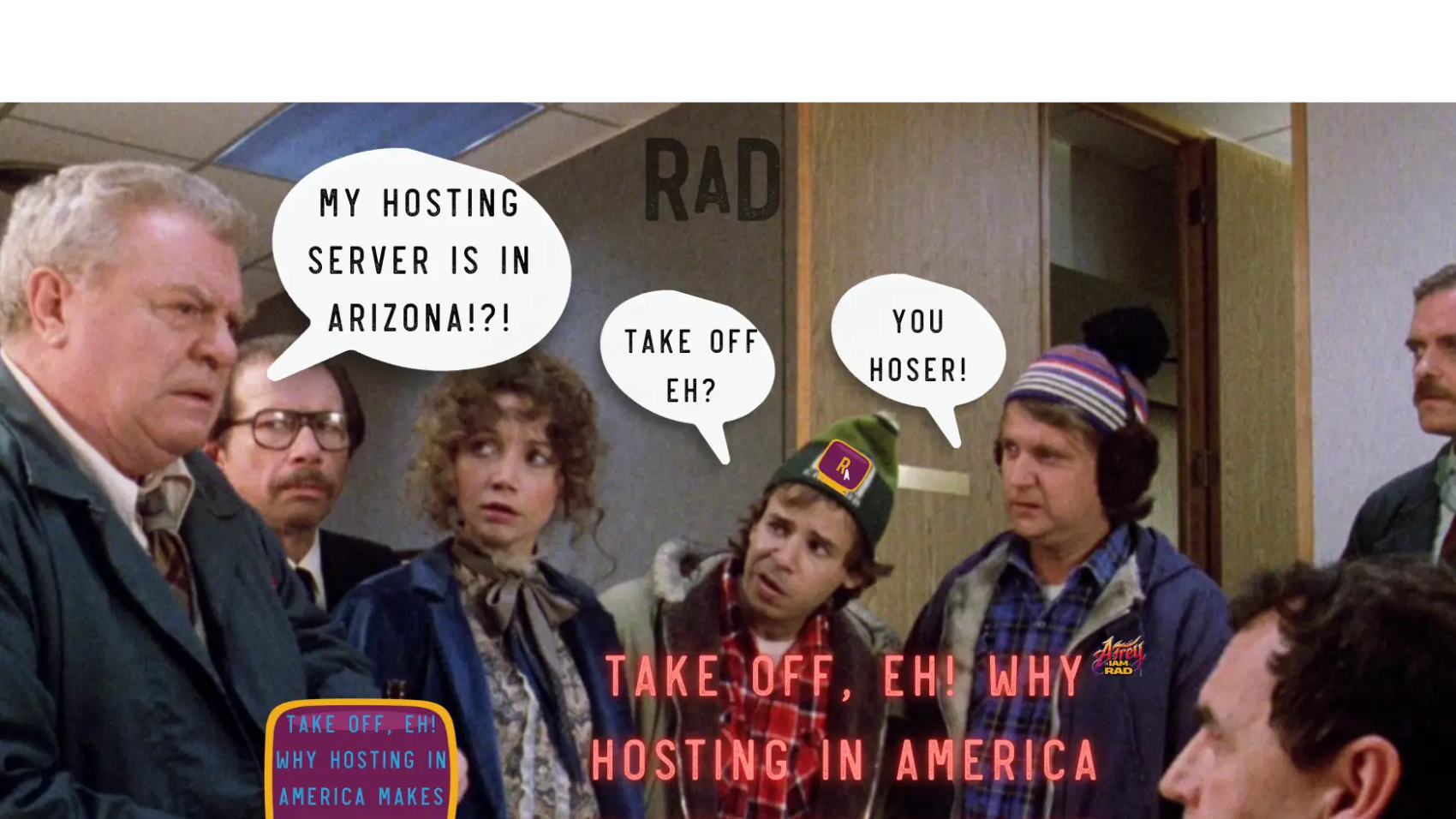Canada Tariffs: Supercharge Your Business & Fuel Canadian Innovation
In today’s fast-paced global market, there is a growing emphasis on doing business locally while embracing the quality and innovation that “made in Canada” represents. With evolving trade policies and increasing tariffs, now more than ever is the time to align with Canadian industry and support our local businesses. Whether you’re a seasoned entrepreneur or just stepping into the business world, understanding Canada tariffs and the numerous benefits of Canadian-made products can transform your approach to commerce. We’ll also explore actionable insights to help you leverage these trends, ensuring your business not only survives but thrives.
Canada’s evolving tariff climate has shot to the forefront of economic discussions, especially as the United States just imposed new tariffs on Canadian imports. While these tariffs may challenge established trade patterns, they also present an opportunity for Canadian business growth. For companies willing to pivot and embrace a truly homegrown approach, the benefits can far outweigh the hurdles.
In this article, we’ll cover how these American-imposed tariffs can fuel local innovation, why “Made in Canada” stands out now more than ever, and what steps you can take to adapt your operations. Whether you’re a seasoned entrepreneur or just getting started, these insights will help you harness Canadian resilience and quality to navigate today’s unpredictable market.
Impact of Recent US Tariffs on Canadian Businesses
Less than 24 hours ago, the U.S. government announced new tariffs specifically targeting Canadian goods. This move has immediate implications for exporters and businesses relying on cross-border partnerships. Prices on certain Canadian products could rise in the U.S. market, creating potential slowdowns in sales.
However, this very challenge can spur companies to refine their local supply chains and showcase Canada’s high production standards. By emphasizing the quality, ethics, and innovation behind Made in Canada goods, businesses can make a compelling case to consumers, both domestically and abroad. The key is to remain agile—use this shift in trade policy as motivation to bolster your brand’s Canadian roots and strengthen local ties.
Why “Made in Canada” Matters More Than Ever
-
Homegrown Trust
Consumers increasingly reward authenticity and transparency. Showcasing “100% Canadian” aligns with a growing movement toward ethical sourcing, fair labor practices, and minimal carbon footprints.
-
Quality & Resilience
Canada’s strict manufacturing and safety standards ensure that products labeled “Made in Canada” meet high expectations. Amid global supply chain disruptions, local production is often more reliable—giving your business a competitive edge.
-
Community & Economic Boost
Dollars spent on Canadian-made products circulate within the Canada economy, supporting local infrastructure, employment, and skills development. This ripple effect fosters Canadian innovation and makes communities more self-sufficient.
The Changing Landscape of Global Trade and Canada’s Role
Global Trade Trends and the Impact of Tariffs
Global trade is constantly evolving. Tariffs have long been used as economic tools by governments worldwide to protect domestic industries. In Canada, these tariffs not only act as a safeguard for local businesses but also stimulate innovation and competition among Canadian manufacturers. By imposing tariffs on imported goods, the Canadian government creates an environment where local products are more competitive on both price and quality. This, in turn, encourages businesses to invest in and develop Made in Canada products that stand out for their reliability and quality.
Tariffs are also an integral part of trade negotiations. As countries seek fairer trade terms, Canada’s approach to tariffs can influence international trade policies, making them more balanced and beneficial for all parties involved. The current global climate demands that business owners understand these mechanisms and use them to their advantage.
The Rise of “Made in Canada” in a Competitive Market
When consumers see the label “Made in Canada,” they associate it with quality, trust, and innovation. Canadian products often carry a premium reputation because they are made under strict quality controls and ethical standards. As more people prioritize buying local, Canadian businesses can leverage this brand identity to foster consumer loyalty and drive Canadian business growth.
Moreover, being a champion of the Canada economy means supporting local employment, innovation, and sustainability. The surge in demand for Made in Canada products is a testament to the resilience and ingenuity of Canadian manufacturers and artisans. Businesses that embrace this movement not only contribute to their communities but also gain a competitive edge in the marketplace.
Understanding Tariffs: A Closer Look
What Are Tariffs and How Do They Work?
Tariffs are essentially taxes imposed on imported goods, making foreign products more expensive than their domestic counterparts. In Canada, tariffs serve several purposes:
Protecting Domestic Industries: By increasing the cost of imported goods, tariffs give local businesses a competitive advantage.
Encouraging Local Production: With tariffs in place, manufacturers are motivated to produce locally, boosting the quality and variety of Made in Canada products.
Balancing Trade Deficits: Tariffs can help reduce the imbalance between imports and exports, supporting the Canada economy overall.
For businesses, understanding tariffs is crucial. By comprehending how these economic policies work, you can better position your offerings, anticipate market shifts, and create strategies that turn challenges into opportunities. This is particularly important for sectors like manufacturing, retail, and technology, where global supply chains are deeply intertwined with local production standards.
Tariffs as Catalysts for Growth
Contrary to popular belief, tariffs don’t just create roadblocks; they can also ignite progress. When importing becomes costlier, businesses turn to homegrown solutions. This dynamic pressures local manufacturers to innovate, pushing them to elevate product quality and incorporate new technologies. Over time, it can even open the door to global recognition of Canadian manufacturing excellence.
While adapting to higher costs might seem daunting, it often leads to discovering better processes, forming stronger local partnerships, and tapping new markets. In many cases, these changes prompt expansions in R&D, helping businesses future-proof their strategies in an increasingly competitive world.
Action Steps for Businesses
-
Reassess Your Supply Chain
Look for Canadian partners to source materials and services. By doing this, you reduce dependency on volatile foreign markets and strengthen local economies.
-
Emphasize the Canada Brand
Infuse “Made in Canada” messaging into your branding. Show people why local matters, highlighting your commitment to homegrown quality and innovation.
-
Stay Informed
Keep an eye on tariff announcements, especially as the U.S. could shift policies rapidly. Setting up alerts or subscribing to governmental and industry updates can help you pivot quickly.
-
Collaborate Locally
Seek out Canadian suppliers, tech companies, or marketing agencies to form mutually beneficial relationships. These partnerships broaden your network and reinforce a thriving national business ecosystem.
Why Supporting Canadian Businesses is More Important Than Ever
Economic Benefits of Supporting Local Industries
Supporting Canadian businesses means investing directly in the growth and stability of your local economy. When you purchase Canadian-made products, you’re not just buying an item; you’re contributing to a larger ecosystem of innovation, job creation, and community development. The economic ripple effect of supporting local industries is profound:
- Job Creation: Canadian businesses, particularly small and medium enterprises, create local job opportunities that strengthen communities.
- Innovation and Quality: By fostering a competitive local market, businesses are encouraged to innovate and improve product quality.
- Economic Resilience: A strong local economy is less vulnerable to global economic fluctuations, ensuring long-term stability.
In a time when the global market is unpredictable, investing in Canadian businesses is a strategic move to build resilience. The infusion of local capital and talent nurtures a thriving ecosystem where Canadian innovation is at the forefront, driving progress and ensuring that quality remains a top priority.
The Cultural and Social Impact of Buying Local
There is also a powerful cultural and social dimension to supporting Canadian businesses. When you buy local, you are endorsing the values of community and sustainability. Canadian products are often made with a keen eye on ethical practices, environmental stewardship, and social responsibility. This commitment to responsible business practices not only enhances consumer trust but also reinforces a sense of national pride and unity.
Moreover, local businesses are more likely to invest back into the community. Whether through local sponsorships, community events, or partnerships with other regional enterprises, the support of local businesses fosters a robust community spirit. This, in turn, contributes to a more sustainable and connected society—a true embodiment of what it means to be part of the support Canadian industry movement.
Creating a Marketing Campaign Centered on Canadian Values
In an age where consumers are increasingly mindful about the origin of the products they purchase, a marketing campaign that emphasizes the value of Canadian-made products can be a game changer. Here’s how you can craft a campaign that resonates:
Storytelling:
Share the unique stories behind your products. Highlight the craftsmanship, innovation, and dedication that go into each item. Narratives that capture the spirit of Canada and the dedication of local artisans foster deeper connections with your audience.
Visual Identity:
Develop a visual identity that reflects Canadian culture and landscapes. Utilize images that evoke pride in local heritage and showcase the beauty of Canadian craftsmanship.
Community Engagement: Host events, webinars, or social media challenges that promote local businesses. Encourage your audience to share their own stories of supporting Canadian industry, using hashtags like #SupportCanadianIndustry and #MadeInCanada.
Content Marketing:
Produce content that educates your audience about the benefits of Canadian tariffs and how they protect local industries. Use blog posts, videos, and infographics to break down complex trade policies into digestible insights.
Utilizing SEO and Content Strategy to Boost Your Online Presence
In today’s digital landscape, having an effective online presence is non-negotiable. To ensure your business stands out, consider these SEO and content strategies:
- Keyword Integration:Seamlessly incorporate your targeted keywords into your content. In addition to canada, made in Canada, and tariffs, strategically include keywords such as Canadian business growth, Canada trade policies, Canada economy, Made in Canada products, Canadian innovation, support Canadian industry, and Canada manufacturing excellence.
- Engaging Content: Write content that not only informs but also engages your audience. Use conversational language and relatable examples to make complex topics accessible.
- Internal Linking: Connect your blog posts with other relevant pages on your website to improve your site’s overall SEO. Internal linking helps search engines understand your site structure and keeps visitors engaged longer.
Mobile Optimization: With a significant portion of users accessing content on mobile devices, ensure your website is fully responsive. This enhances user experience and improves your search engine rankings.
- Backlink Strategy: Build relationships with other Canadian businesses and influencers to earn quality backlinks. These partnerships not only boost your SEO ranking but also solidify your reputation as a trusted source in the industry.
Future Outlook: Navigating US-Imposed Tariffs
As the U.S. continues to reshape its international trade policies, Canadian businesses need to stay alert. There’s a possibility tariffs could expand in scope, creating deeper pressure for exporters. However, this environment can also fast-track local technological advances, improve manufacturing processes, and spur more robust intra-Canada trade.
In the near term, expect some industries—like steel, lumber, or agricultural products—to experience immediate cost hikes in the U.S. market. To counterbalance that, many Canadian companies may look to Europe, Asia, or even emerging markets for potential growth. Despite the hurdles, a renewed focus on local supply chains and brand-building around Canadian excellence will likely strengthen long-term resilience.
For SMEs, pivoting now can help capture new market segments or niche opportunities left open by shifting global competition. In essence, these American-imposed tariffs encourage self-reliance, foster innovation, and spotlight the distinctive quality of Canadian products worldwide.
Opportunities for Global Expansion with a Local Edge
Interestingly, while tariffs are designed to protect local markets, they can also open doors to international expansion. By establishing a reputation for quality and ethical production standards, Canadian businesses can position themselves as premium brands on the global stage. This dual advantage of thriving locally while exploring international markets presents a unique proposition for those willing to embrace the future of commerce.
Practical Tips to Support and Invest in Canadian Businesses
How Consumers Can Make a Difference
As a consumer, your purchasing decisions have a powerful impact on the economy. Here are some practical tips to ensure your dollars support local talent and innovation:
- Research Brands: Look for companies that proudly display the “Made in Canada” label and have a track record of ethical business practices.
- Attend Local Events: Engage with local business fairs, trade shows, and community markets to discover quality Canadian products firsthand.
- Provide Feedback: Let businesses know that you value their contribution to the local economy by leaving positive reviews and sharing your experiences on social media.
Business Leaders: Investing in Local Partnerships
For business owners and leaders, consider these strategies to deepen your commitment to the Canadian market:
- Collaborative Ventures: Explore partnerships with local suppliers, manufacturers, and creative agencies. Collaborative ventures can drive innovation and cost savings.
- Local Sponsorships: Sponsor community events or local initiatives that promote Canadian industry. This not only enhances your brand image but also contributes to community well-being.
- Invest in Talent: Prioritize hiring local talent and invest in training programs that boost the skills and creativity of your workforce.
Conclusion
The Inevitable Success of a Locally Focused Business Model
In a rapidly evolving global economy, tariffs are more than just regulatory hurdles—they are catalysts for innovation, quality, and sustainable growth. By embracing the values of “Made in Canada,” you’re not only boosting your bottom line but also championing a resilient local economy built on quality, ethical practices, and a commitment to community.
The future is bright for businesses that understand the importance of Canadian business growth and Canada trade policies. As a creative, powerhouse leader, you have the capacity to harness these trends and propel your business to new heights. Every decision to invest in Canadian-made products and support local industry contributes to a legacy of excellence and economic resilience.
Remember, success in business is not just about adapting to market changes—it’s about leading the charge. By positioning your brand at the forefront of the “Made in Canada” movement, you are setting yourself up as a beacon of Canadian innovation and Canada manufacturing excellence. Your entrepreneurial spirit, combined with the inherent quality and value of Canadian products, ensures that your journey to success is not only achievable but inevitable.
As you forge ahead, let your business model be a testament to the strength of local economies. Embrace the tariffs not as limitations, but as stepping stones to a more innovative, competitive, and prosperous future. Your commitment to supporting Canadian businesses isn’t just a strategic decision—it’s a declaration of faith in the power of community, quality, and sustainability.
Why Choose Rad Websites and Marketing and Rad DDR Security
When navigating the complexities of tariffs and an ever-evolving global market, partnering with seasoned experts is essential. At Rad Websites and Marketing, we’ve been proudly made in Canada since before it was cool, and our roots run deep in supporting the local landscape. We believe in the power of homegrown innovation—we are 100% hosted in Canada, Built in Canada, and we will always preach that message. If you’re with GoDaddy or any of the other US big boys, it’s time to make a switch.
Our expertise in crafting responsive and dynamic (rad) digital strategies empowers Canadian businesses to thrive amidst economic shifts, ensuring your brand’s story of quality and innovation resonates with your audience. We’re not just about business; we’re about community. Our journey includes launching a compelling book series—one of which is out right now—offering another creative way to support your own business while championing fellow Canadian entrepreneurs.
And for robust digital protection, Rad DDR Security provides cutting-edge security services to safeguard your assets and uphold the integrity of your data, personal information and operations. When you choose us, you’re not only investing in expert services but also contributing to a vibrant ecosystem of Canadian innovation and success.
Final Thoughts
In conclusion, the time to invest in and support Canadian businesses is now. With evolving tariff policies that favor local production, the landscape is ripe with opportunity. Whether you are a consumer, entrepreneur, or investor, your role in this transformation is vital. The keywords and insights shared in this post—canada, made in Canada, tariffs, Canadian business growth, Canada trade policies, Canada economy, Made in Canada products, Canadian innovation, support Canadian industry, and Canada manufacturing excellence—are not just search terms. They represent a mindset, a commitment, and a future that is steeped in quality and progress.
New American tariffs on Canadian imports may feel like a curveball, but with the right strategies in place, they can be the spark that ignites your business’s next phase of growth. By doubling down on local supply chains, emphasizing Made in Canada craftsmanship, and fostering community support, you’ll be positioning your venture to stand out in a shifting global marketplace.
Ultimately, tariffs aren’t just about taxes or trade tensions—they’re about how businesses like yours can pivot, innovate, and thrive. Embracing Canada’s reputation for high-quality manufacturing and ethical production doesn’t just benefit your bottom line, it strengthens our collective economy. Be proactive, stay informed, and remember: the future belongs to those who adapt quickly and champion Canadian excellence.
Thank you for joining this conversation. As you implement these insights, remember that every step you take towards supporting local industries brings us all closer to a vibrant, sustainable, and innovative Canadian economy. Let your actions today inspire the successes of tomorrow.















